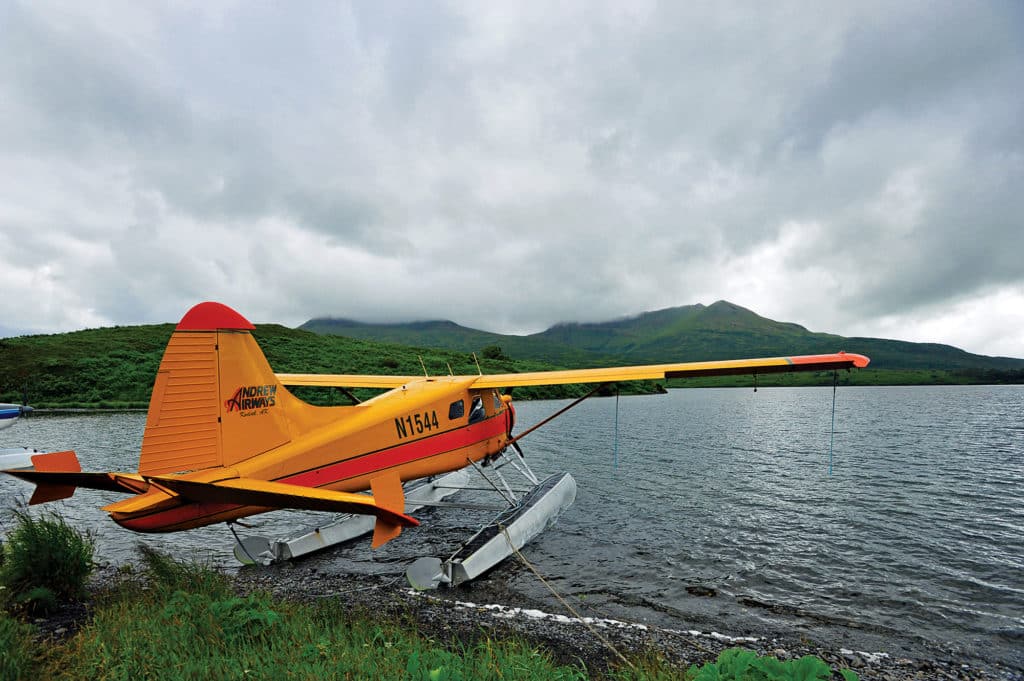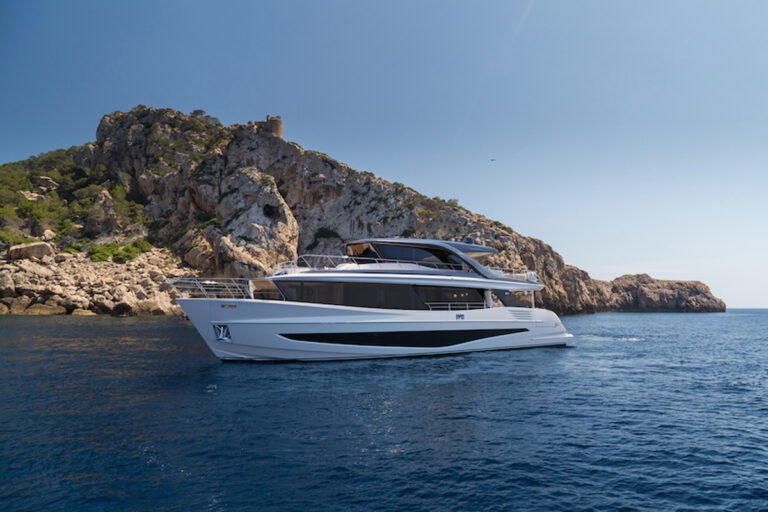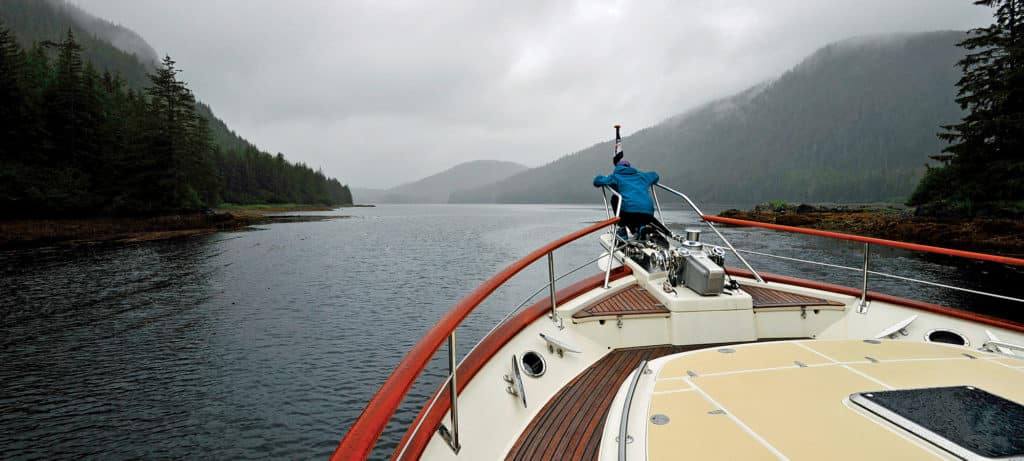
It’s hard to make a whisper sound like a scream, but as our tender hove-to in Takatz Creek, my friend Tim managed to do exactly that. “Bear!” he rasped as loudly as he could without shattering the sounds of nature all around us. “There’s a bear right there!”
This part of Baronof Island in Alaska is home to the kind of raw nature that could make any human feel small, even without the 3,500- and 4,500-foot-tall mountains that surrounded us on three sides — the type of place where, admittedly, I should have been paying closer attention. In that moment, I was mesmerized by the creek, which was teeming with salmon. I was watching them surface and surge upriver, right before I fixated on the majestic rapids flowing near waterfalls 100 yards away.
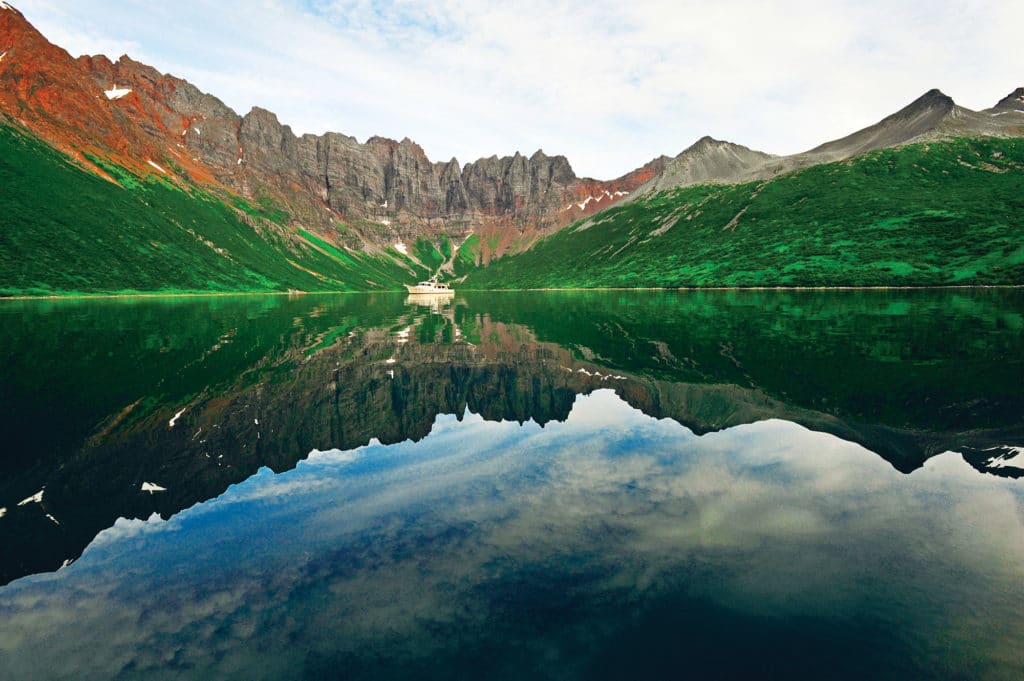
I should have realized a black bear would find the location ideal; it was a fresh-fish buffet. At Tim’s hushed insistence, I turned to see the beast not 50 yards away. All I could think to do was raise my camera — slowly.
The bear saw us too, and seemed wary.
The next minute, which felt far longer, was punctuated by the clicks of my camera’s shutter. Finally, the bear lumbered off like a linebacker leaving the field, with us in the background, staring like awestruck fans. We gasped again when the bear stopped on the far side of a fallen tree, stood on its hind legs to look at us for a minute and then melted into the heavy forest with a sole, hesitating backward glance. We’d surely remember that for the rest of our lives.
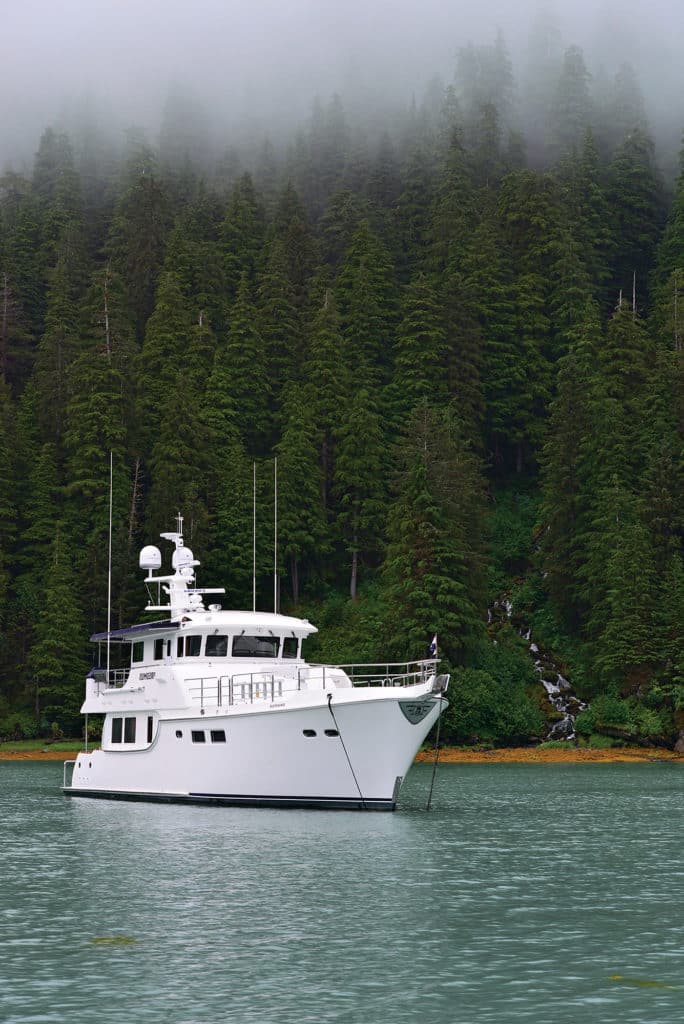
You’d think an encounter like this would be once in a lifetime, but it turned out to be once in an hour. As we cruised in the tender back to the boat in Takatz Bay, we passed a riot of eagles, perched in trees and standing on the shingle beach at the water’s edge. They too had come to reap the harvest of the throngs of spawning salmon.
This was just one day of my four-week, 1,500-mile passage from Sand Point, off the Alaskan Peninsula, to Sitka on the southeast coast (where we encountered the bear) and then on to Petersburg. The amount of nature and wildlife to be experienced in here is almost incalculable, not only along my route, but throughout the whole of this state dubbed “The Last Frontier.” At nearly 34,000 miles, Alaska has the longest coastline in America. One could cruise the south coast alone, season after season, and never anchor in the same cove, harbor or bay twice.
Having cruised parts of Alaska before, I believed I had some idea of what to expect, but I was entirely unprepared for the peninsula’s utter remoteness and sublime desolation. It’s a region to which few cruising vessels venture, and with good reason: This part of the coastline is exposed to the North Pacific’s unremitting swell and abrupt weather changes. Settlements, provisioning, spare parts and other necessities are few and far between, and cellular and Internet service is, with few exceptions, nonexistent. Even VHF weather is absent in many locations.
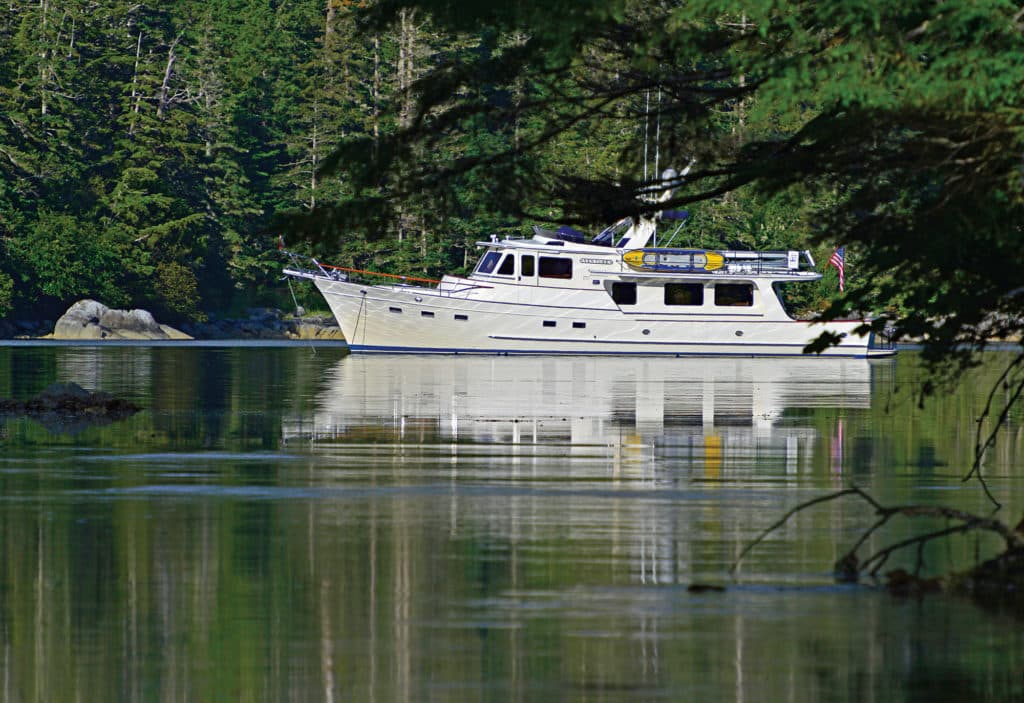
Sand Point, in the Aleutians East Borough on the Alaskan Peninsula, is where I started my journey, with an itinerary that included two boats. First was the Fleming 65 Venture, owned by boatbuilder Tony Fleming, and second was Piredmus, a Nordhavn 63 owned by my friends Tim and Michelle.
Both are the kinds of boats that have marketing literature declaring them adventure-ready. If there were ever a place to put them to the test, this was it.
I met Venture in July, carrying my rented Iridium GO! along with my smartphone to ensure I’d at least have dial-up data speeds for communication with my office and to post periodic updates on my Facebook page. Sand Point has a fishing fleet and, thus, a grocery store, which kept the crew busy with provisioning while I walked inland from the harbor. A small white church had a belfry topped by a Russian Orthodox cross, and a trio of ravens roosted under its overhang. Edgar Allen Poe might have had something poetic to say about that scene; this was definitely a hinterland where the superstitions about foreseeing death might prove true.
Our cruise would take us from one impossible-to-match scene right into another. Castle Bay’s northwest arm put us in the shadow of sheer 3,000-foot cliff faces. The peaks, enshrouded in snow and mist, were only partially visible, and blue sky made only occasional appearances. Wind funneled down and through the canyonlike walls, and a lone eagle circled above Venture as we dropped anchor. Periodically, great rumbles echoed in the air, the sounds of boulders falling from enormous heights. Black and white murres bobbed and kittiwakes circled the boat, the former routinely disappearing to hunt for meals.
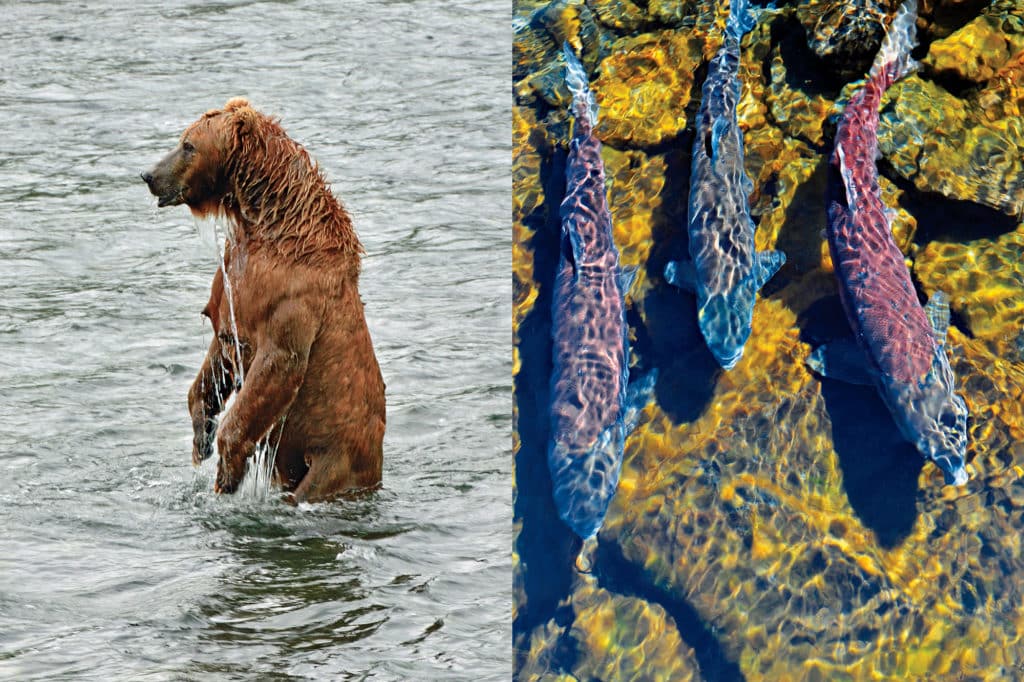
Not to be outmatched, the passage to Sutwik Island, some 10 miles off the peninsula’s coast, left us gobsmacked by the billowing white clouds above jagged black volcanic islands, an almost artistic study in the light and dark contrast of nature itself. Here, Dall’s porpoises — which look like miniature orcas with their distinct black-and-white coloration — raced to our bow, arching and blowing and playing just ahead of Venture‘s stem. I’ve seen dolphins at sea and in the bow wave many times; Dall’s, however, are larger and more energetic. They are renowned as the fastest swimmers of all small cetaceans, capable of reaching 30 mph.
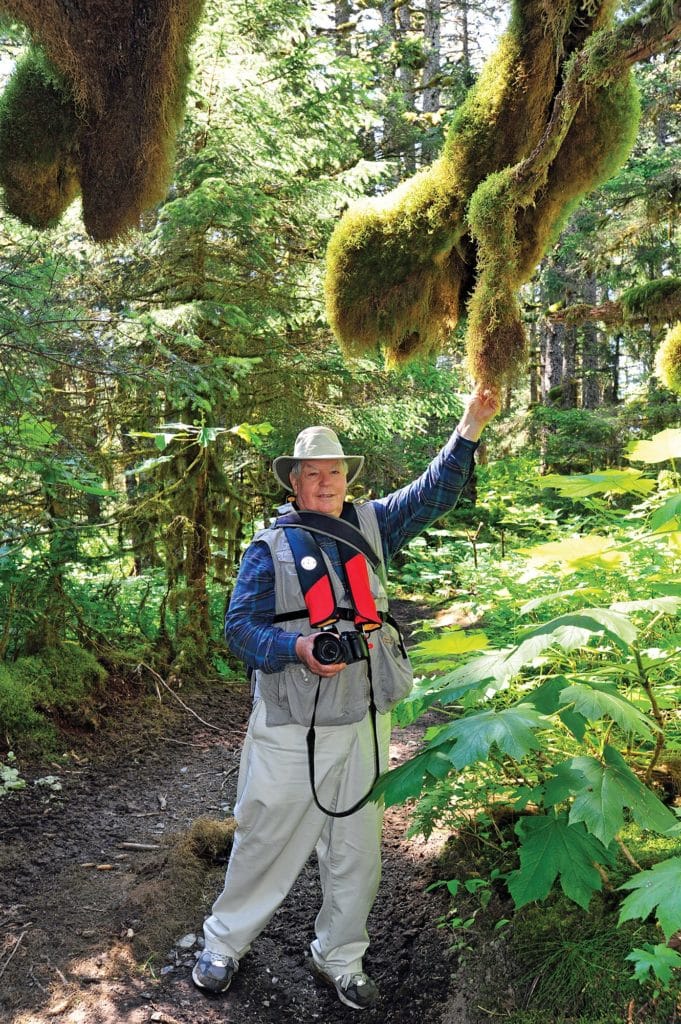
And then there was Sutwik itself. I hiked into the interior by climbing up along a waterfall to the steep hills and meadows inland, where I found low grass and thick underbrush. I realized eagles were about when I heard their distinctive peeps. Unlike the bird itself, the eagle’s vocalism is distinctively unmajestic; the sound you hear on TV is often a dubbed hawk’s call. I spotted a pair circling over a nest on a promontory that protruded into the sea, made my way to within about 100 yards of them and simply lay down in the grass, watching them soar overhead. Again, I was mesmerized. (And thankfully, this time, there was no bear lurking behind me.)
While encounters with nature are commonplace in this part of Alaska, meeting humans is a rarity and, often, an oddity. Lazy Bay on Kodiak Island was my chance to visit the Alitak Cannery, which is where I met its manager of 17 years, Woody Knebel, a boyish-faced, affable, 40-ish fellow.
His office, chockablock with artifacts, antiques and fossils, is a miniature shrine to Kodiak wildlife, natural history and native populations. He offered a tour that included not only the facility — which is capable of processing 1.3 million pounds of salmon in three days — but also the “museum” room he’d created. It houses a variety of artifacts, from a 100-year-old wooden dory to antique fish-processing equipment to a restored and functional steam engine.
The rugged wonder of this part of Alaska was all fun and excitement until we attempted to weigh anchor in Chip Cove, adjacent to an abandoned cannery. Steady rainfall had settled in, and our windlass failed, mercifully with only about 10 feet of chain remaining out. I troubleshot it in the frigid, driving rain; one power stud on the motor had overheated and had parted from the winding. It was not repairable, at least not there, where the bears and eagles and salmon fast became a reminder that we were very much on our own aboard Venture.
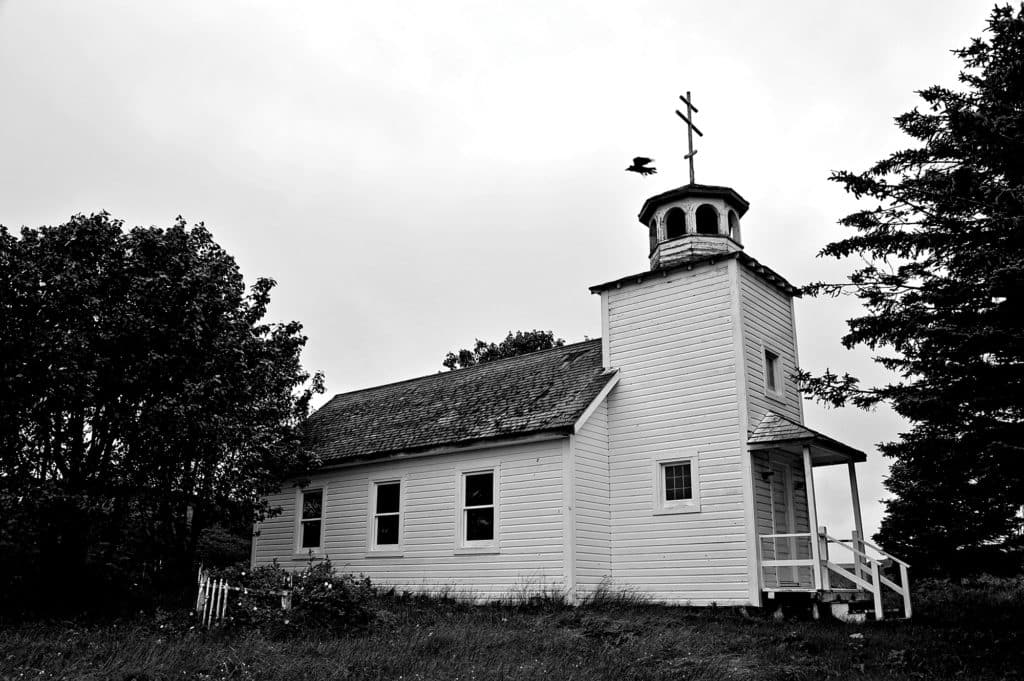
Kodiak, which has ferries, airlines and repair shops, was 120 nautical miles away. A leaking hydraulic hose gave us something to do after we entered the waypoint at the helm and pointed Venture‘s bow there. I tried not to dwell on the fact that we were in close proximity to the site of the infamous Exxon Valdez oil spill, and instead watched the seabirds, which found the steep cliff faces to be ideal nesting grounds. Fulmars and murres of several varieties were there too, along with puffins; black-footed albatrosses; northern, short-tailed and sooty shearwaters; and a red-footed pigeon guillemot. For an avid bird-watcher, this detour could fast become a main event.
We made it to Kodiak, where during three days, two repair shops attempted to fix the windlass motor without success, ultimately forcing us to have a replacement flown in from British Columbia. Stuck on shore, we chartered a seaplane, a decision that would let me experience Alaska in yet another fascinating way.
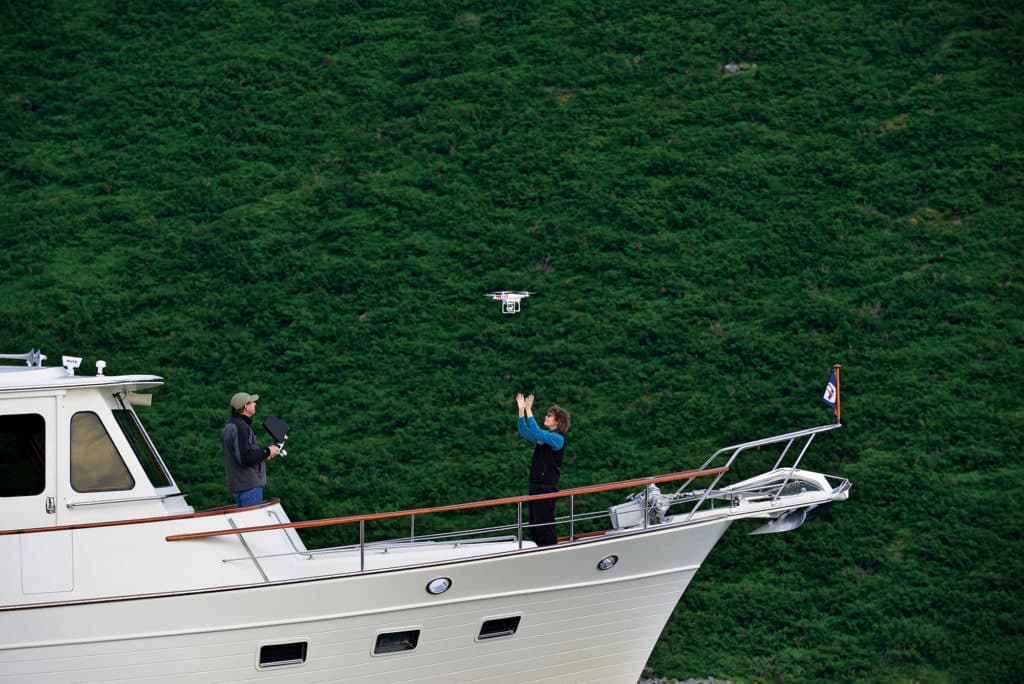
From above, soaring at a leisurely 110 knots, the scenery was jaw-dropping: turquoise high mountain lakes, glaciers and snowcapped peaks, streams and bays punctuated by the occasional fishing boat, and countless game trails. Our altitude rarely exceeded 500 feet above ground level; we could see schools of salmon at the mouths of rivers and streams, as well as deer, bears and mountain goats, some of which we passed at eye level. We flew above a pair of eagles in flight and then encountered a female bear and two cubs feasting on a beached-whale carcass. Frazer Lake is where we touched down and hiked about a mile to a waterfall and fish weir, spotting seven bears in the process — two mothers with two cubs each, and one large male.
The cubs nibbled on green grass and leaves as they patiently watched the adults hunt for fish. Occasionally the youngsters wrestled. The adults rushed to and fro, making great splashes, poking their heads underwater and marching like an inverse periscope to look for fish. At times, we were no more than 50 feet from the bears, and this time, I was prepared. While our pilot carried a firearm, he said he’d never needed to use it.
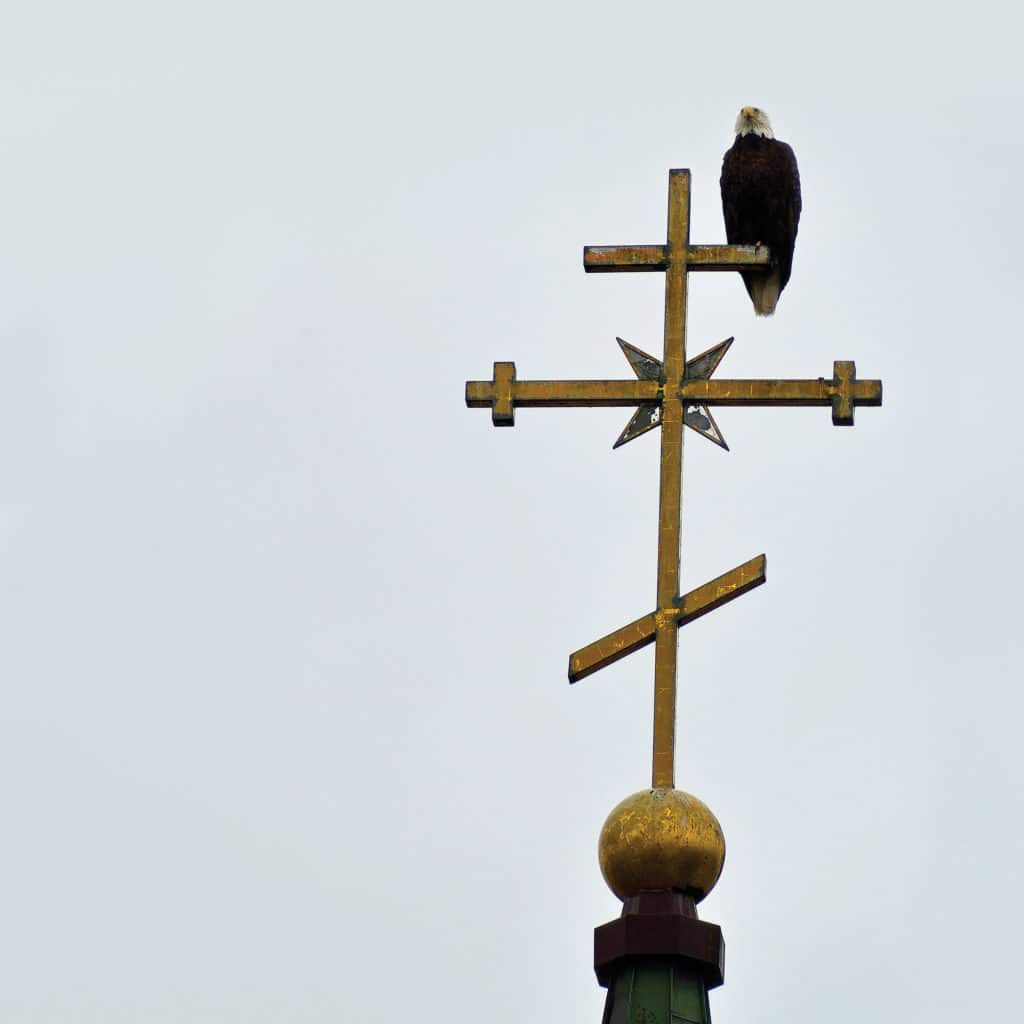
The replacement windlass motor arrived, and Venture crossed the Gulf of Alaska. After 55 hours and 560 nautical miles, we dropped anchor in Sukoi Bay, in southeast Alaska. A mother bear and cub strolled along the shoreline, occasionally stopping to munch on grass. I stood in the cockpit watching them and saw an eagle dive into the water, pouncing on a fish. The eagle had apparently miscalculated, disappearing completely beneath the surface. It reappeared with empty talons, rested for a while, then swam toward the shore, using its wings to do a crude breast stroke. On the beach, it perched on a half-submerged branch, looking bedraggled. The eagle’s mate flew cover overhead, calling the whole time as if to say, “I can’t believe you did that!”
I saw the eagles again from the cockpit, maybe six hours later. They were perched in a tree directly above the bears, about 30 feet apart. They looked as if they were not speaking to each other. I chuckled at the odd personification.
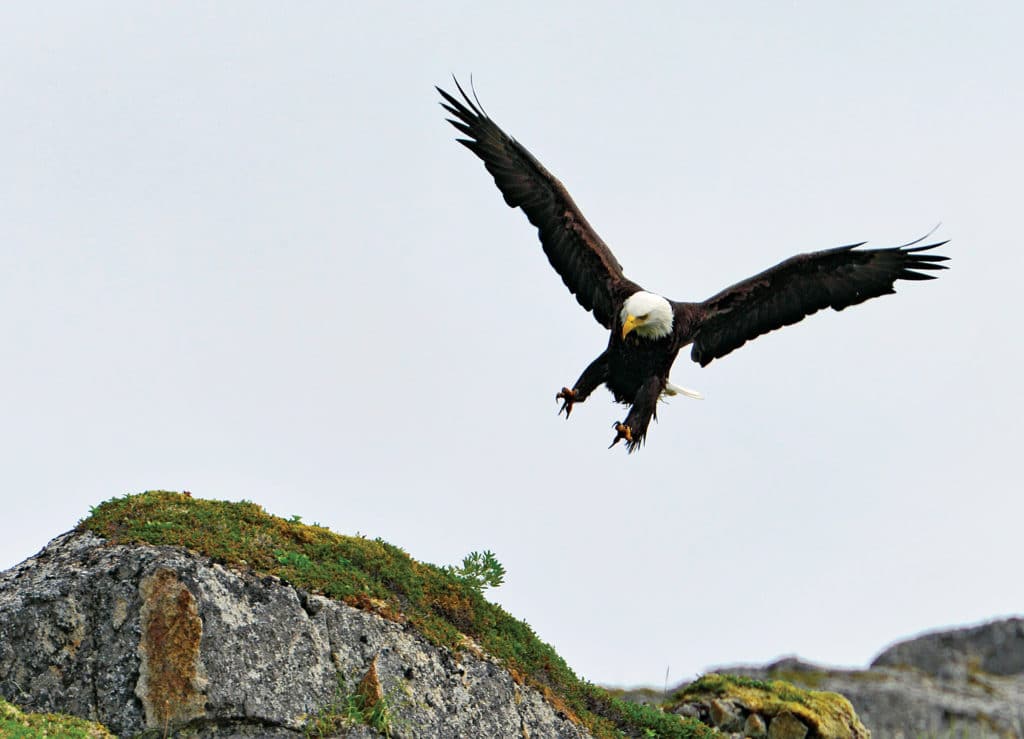
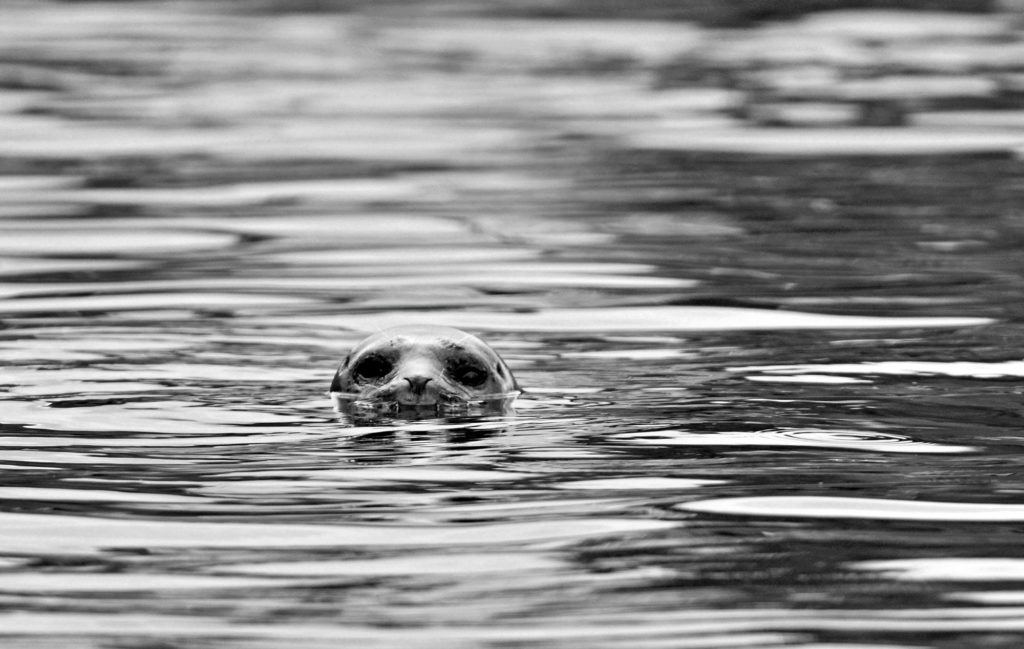
Sitka is where I said goodbye to the Fleming Venture and hello to the Nordhavn Piredmus, my home for the final week of my Alaska excursion that would end in Petersburg — the week that would include that staggering brush with the bear that stood straight up and looked at Tim and me while we bobbed in the tender.
It’s hard to imagine what else we might have encountered had we gone on for another month and another 1,500 miles. That’s the beauty of a last frontier with 34,000 miles of coastline to explore, and of having tough yachts built for the purpose. There will always be plenty of reasons to come back. The most important one being: It’s here.
